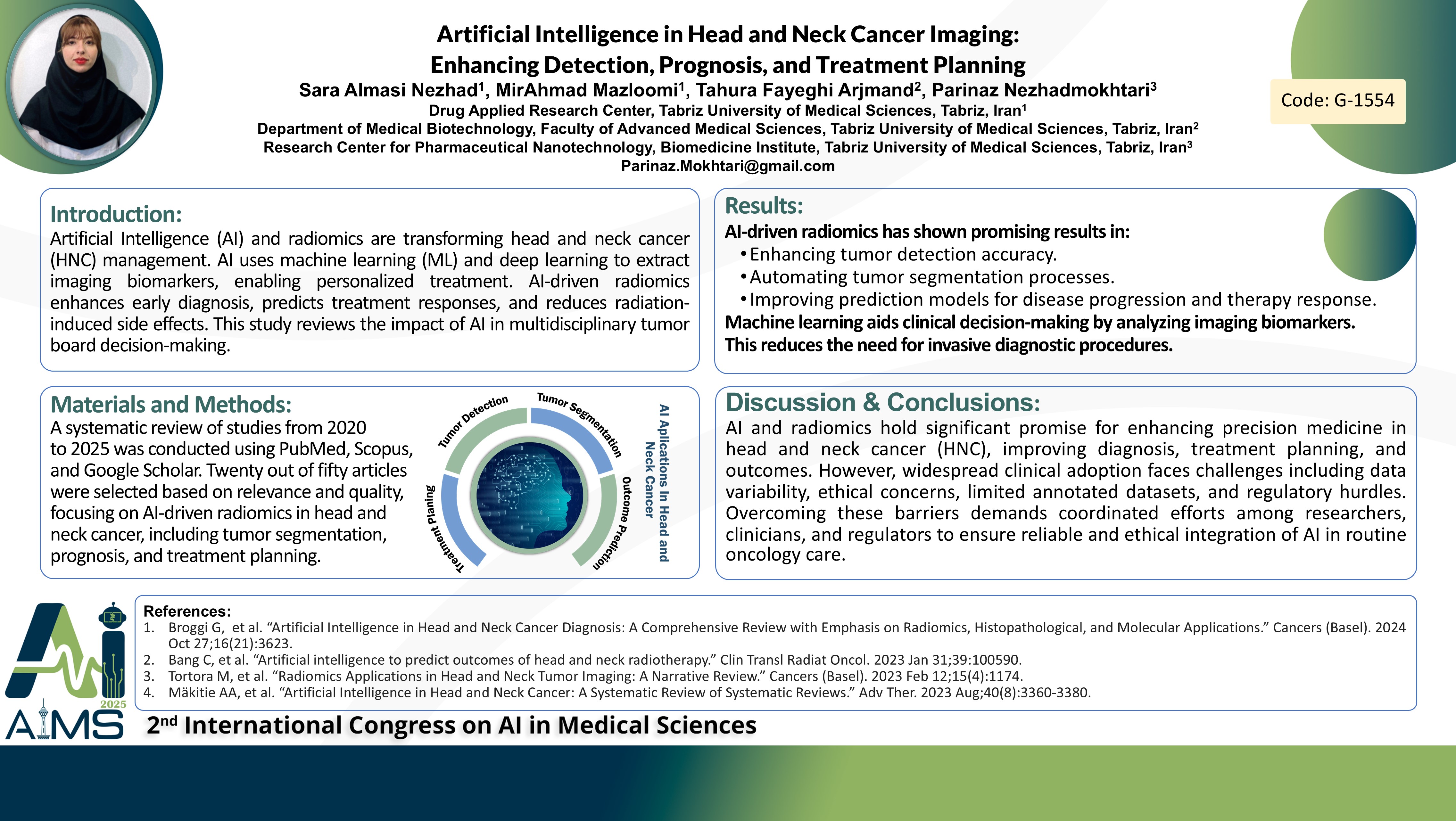هوش مصنوعی در تصویربرداری سرطان سر و گردن: بهبود تشخیص، پیشآگهی و برنامهریزی درمان
کد: G-1554
نویسندگان: Sara Almasi Nezhad ℗, MirAhmad Mazloomi, Tahura Fayeghi, Parinaz Nezhadmokhtari *
زمان بندی: زمان بندی نشده!
برچسب: تشخیص و درمان سرطان
دانلود: دانلود پوستر
خلاصه مقاله:
خلاصه مقاله
Background and aims: Artificial Intelligence (AI) and radiomics are revolutionizing the diagnosis, treatment, and management of head and neck cancers (HNCs). Utilizing machine learning (ML) and deep learning algorithms, AI can extract and analyze intricate radiomic features from medical imaging, enabling detailed tumor characterization and personalized treatment plans. AI-based radiomics has the potential to enhance early tumor diagnosis, predict treatment response, minimize radiation-induced side effects, and advance patient care. This study provides a comprehensive examination of AI-driven radiomics in HNC management, focusing specifically on its use in multidisciplinary tumor board decision-making. It examines the prospects, processes, and constraints of using AI in radiomics to enhance clinical decision support systems and improve cancer care. Method: A systematic review was performed utilizing PubMed, Scopus, and Google Scholar to identify relevant studies published from 2020 to 2025. The search terms included "AI in HNC," "radiomics in oncology," "machine learning in cancer imaging," and "AI-driven precision oncology." Of the 50 articles reviewed, 20 were chosen based on relevance and methodological rigor. The review concentrated on the applications of AI-driven radiomics in HNC, encompassing tumor segmentation, prognostic modeling, and treatment optimization. Results: AI-driven radiomics has demonstrated considerable promise in HNC management by augmenting tumor detection precision, facilitating automated tumor segmentation, and refining predictive models for disease advancement and therapeutic response. Machine learning algorithms evaluate imaging biomarkers to inform clinical choices, thereby reducing the need for invasive treatments. The variability in data and the absence of standardization hinder the integration of AI into clinical workflows. Ethical issues must also be addressed, including patient privacy and algorithmic bias. Additionally, the absence of large-scale annotated datasets and regulatory barriers limit the widespread application of AI-driven radiomics in clinical practice. Conclusion: AI and radiomics represent significant advancements in precision medicine for managing HNCs. They offer new possibilities for improving diagnosis, treatment planning, and patient outcomes. To realize their potential, it is imperative to confront technological problems, ethical issues, and regulatory obstacles. Collaboration among researchers, doctors, and regulatory bodies will be essential for the safe and successful integration of new technologies into standard cancer treatment.
کلمات کلیدی
ArtificialIntelligence, RadiomicsinHeadandNeckCancer, MachineLearning, AI-DrivenPrecisionMedicine, TumorDetectionandPrognosticModeling
